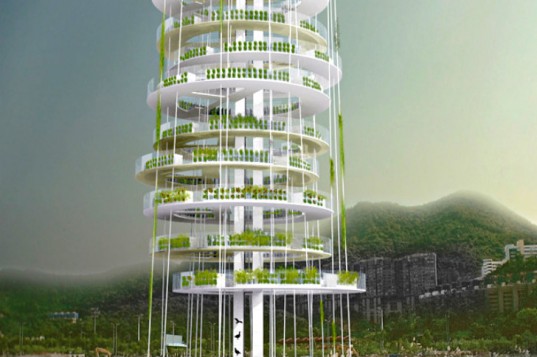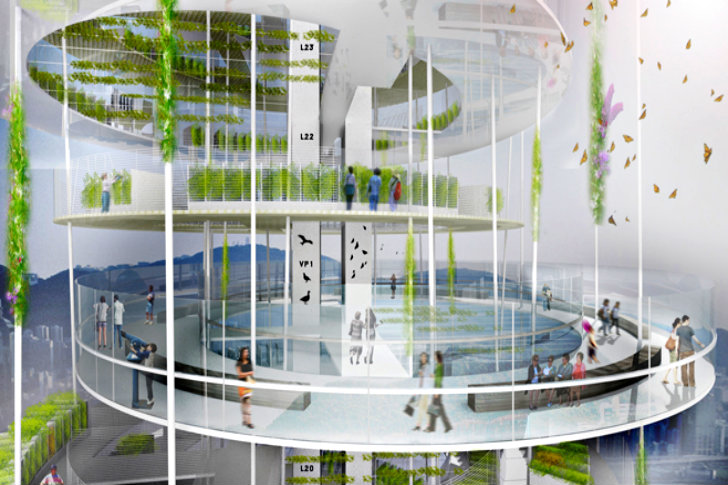CHINA’S FUTURISTIC VERTICAL FARMS
28 Aug 2013
Inspired by terraced rice farming techniques, Dynamic Vertical Networks involve a series of circular farm plots where food would be grown hydroponically.

Since 2000, China’s cities have expanded at an average rate of 10% annually, limiting their ability to produce enough food for the 20% of the world which they support. Spanish firm JAPA Architects have proposed a Dynamic Vertical Networks (Dyv-Net) scheme as a solution to this problem, which would see the creation of modern, efficient and environmentally sustainable farming structures.




Spanish Architect Javier Ponce from JAPA believes that as “Hong Kong has a predominant verticality and a lack of buildable space, it could be interesting to reinterpret this verticality and propose this new type of vertical farming on the city's outskirts”.
JAPA’s Dyv-Net farms would be built from lightweight metals and produce crops all year round to support the local economy. Inspired by terraced rice farming techniques in China, they involve a series of circular farm plots where food would be grown hydroponically and crops would be rotated throughout the year according to season. The circular levels would also rotate to allow the plants to receive the appropriate amount of sunlight. Crops could also be strung across the middle of the rings as well. The Dyv-Net vertical farm towers would also be used for research labs that could help move the agriculture industry further.
"We believe growing cities in China are potential targets to introduce in their outskirts a series of Dyv-nets, bringing agriculture closer to the urban centres and creating a new productive landscape," Ponce said. The proximity of the towers to the city area would be ideal for a low-cost, low-mileage food distribution network that would feed the city's population.
The units would be designed as ‘biodiversity hubs’, with a wide range of habitats, and would also feature 360-degree viewing platforms for visitors.
"The opportunity to reduce food mileage as well as carbon dioxide emissions and to explore different forms of vertical agriculture is crucial for a sustainable future," Ponce said.

MORE NEWS

REVOLUTIONISE YOUR ROOFTOP WITH ATLANTIS® GREEN ROOF SYSTEM

FACELIFT TO FAçADE WITH SUSTAINABLE GREEN WALL

MULTI-AWARD WINNING PROJECT USES GRC PLANTERS ON GREEN WALL FACADES

PARISIAN CONCRETE JUNGLE

TORONTO’S QUAYSIDE WATERFRONT SUSTAINABLE COMMUNITY

